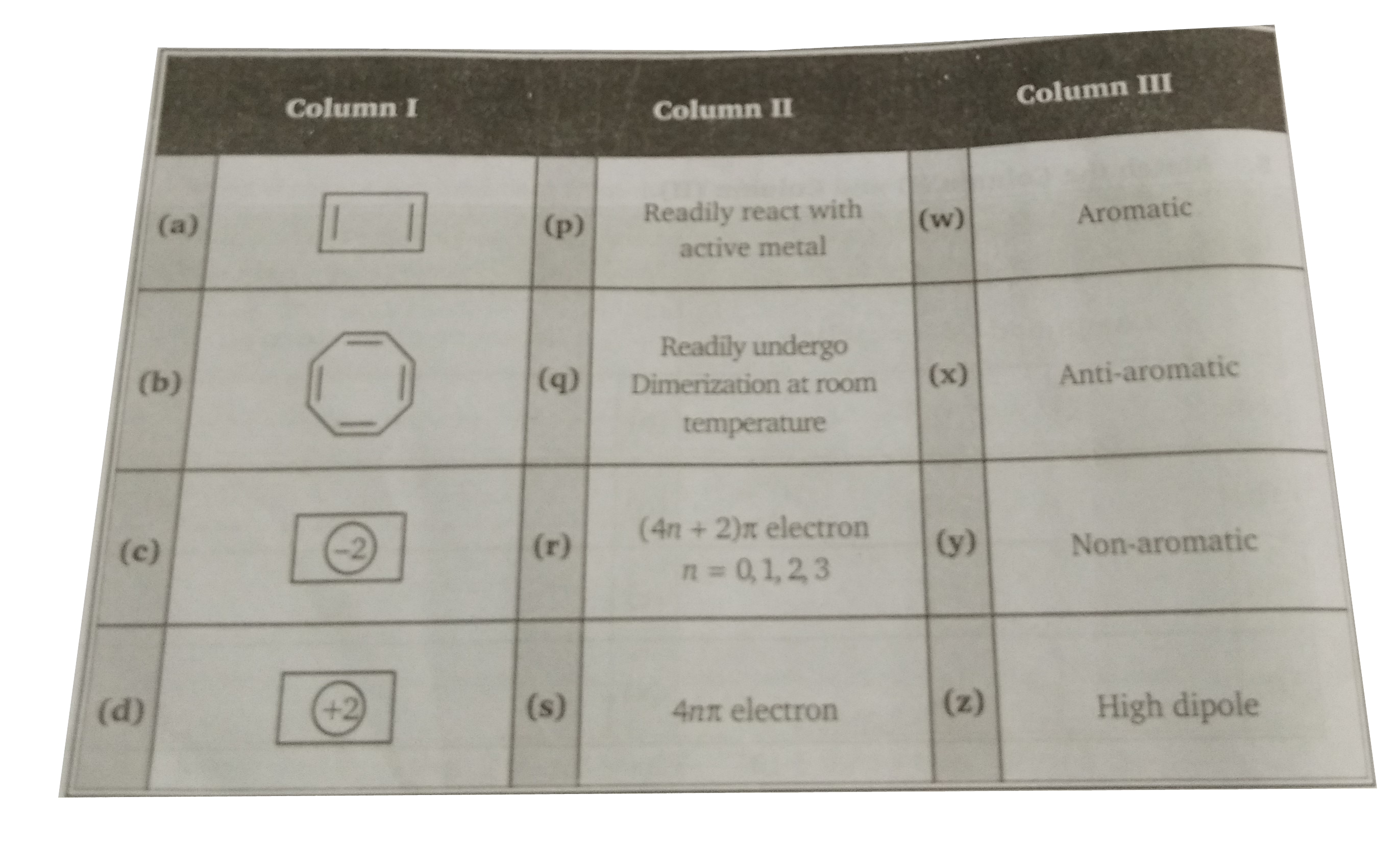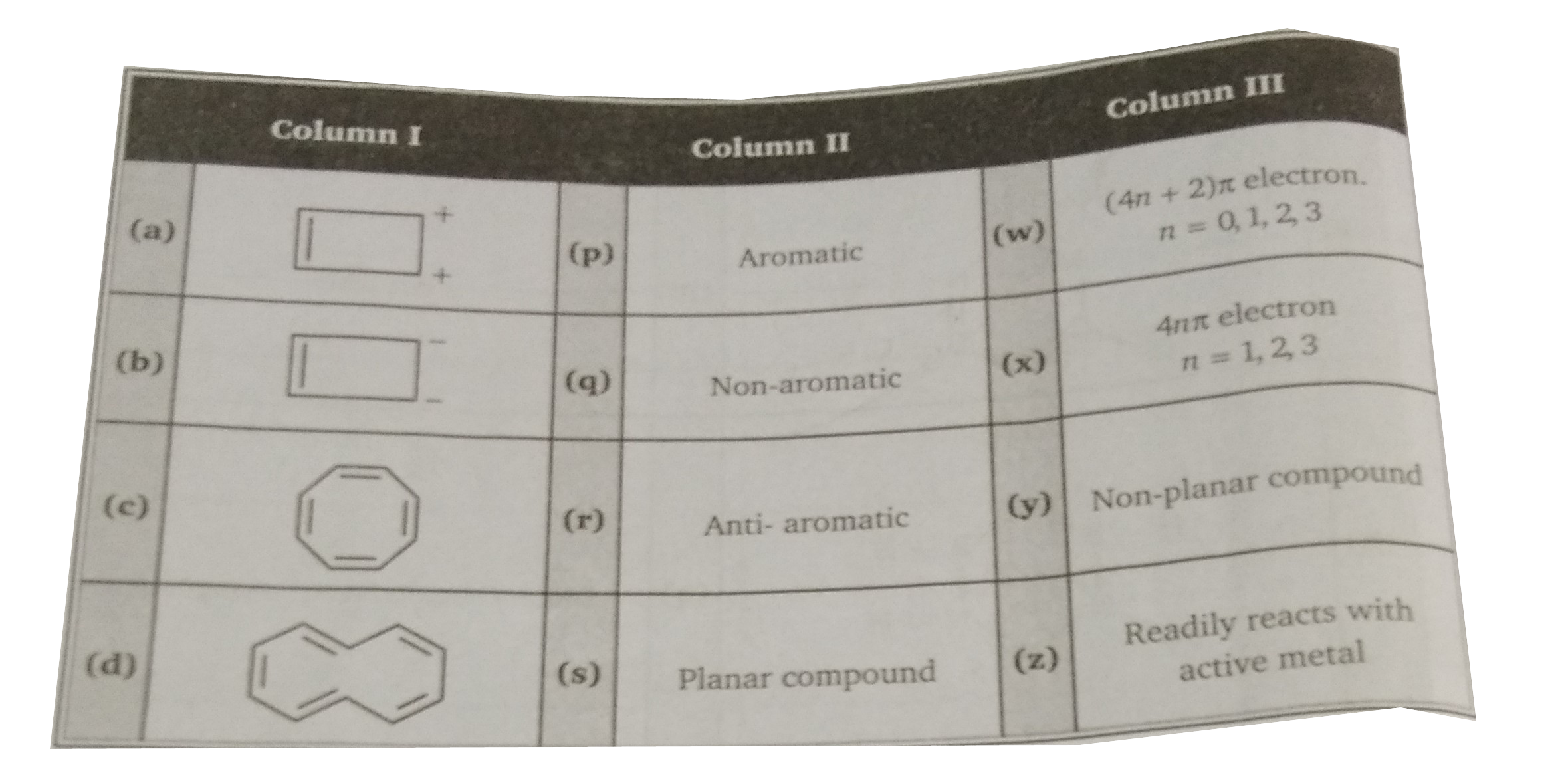Match the columns.
Column -IColumn -I(a)Leptotene(i)Chiasmata(b)Zygotene(ii)Chromosomes visible(c)Pachytene(iii)The pairing of homologous chromosome (d)Diplotene(iv)Clear appearance of tetrads
(a) - (i),(b)-(ii),(c) -(iv),(d) -(iii)
(a) - (ii),(b)-(iii),(c) -(iv),(d) -(i)
(a) - (ii),(b)-(iii),(c) -(i),(d) -(iv)
(a) - (iv),(b)-(iii),(c) -(ii),(d) -(i)
The correct Answer is:B
To solve the matching question, we will analyze each stage of meiosis (Column I) and find the corresponding description (Column II).
1. Identify the stages of meiosis:
- Leptotene (a): This is the first stage of prophase I in meiosis. During this stage, chromosomes start to condense and become visible under a microscope.
- Zygotene (b): In this stage, homologous chromosomes begin to pair up, a process known as synapsis.
- Pachytene (c): This stage is characterized by the formation of tetrads, where paired homologous chromosomes are closely aligned.
- Diplotene (d): In this stage, the paired homologous chromosomes begin to separate but remain connected at points called chiasmata, which are formed during crossing over.
2. Match with the descriptions:
- Leptotene (a) matches with (ii) "Chromosomes visible" because this is when the chromosomes first become visible.
- Zygotene (b) matches with (iii) "The pairing of homologous chromosomes" as this stage involves the pairing of homologous chromosomes.
- Pachytene (c) matches with (iv) "Clear appearance of tetrads" since tetrads are formed during this stage.
- Diplotene (d) matches with (i) "Chiasmata" because chiasmata are formed during this stage as a result of crossing over.
Final Matches:
- (a) Leptotene → (ii) Chromosomes visible
- (b) Zygotene → (iii) The pairing of homologous chromosomes
- (c) Pachytene → (iv) Clear appearance of tetrads
- (d) Diplotene → (i) Chiasmata
Summary of Matches:
- a → ii
- b → iii
- c → iv
- d → i
- Leptotene (a): This is the first stage of prophase I in meiosis. During this stage, chromosomes start to condense and become visible under a microscope.
- Zygotene (b): In this stage, homologous chromosomes begin to pair up, a process known as synapsis.
- Pachytene (c): This stage is characterized by the formation of tetrads, where paired homologous chromosomes are closely aligned.
- Diplotene (d): In this stage, the paired homologous chromosomes begin to separate but remain connected at points called chiasmata, which are formed during crossing over.
- Leptotene (a) matches with (ii) "Chromosomes visible" because this is when the chromosomes first become visible.
- Zygotene (b) matches with (iii) "The pairing of homologous chromosomes" as this stage involves the pairing of homologous chromosomes.
- Pachytene (c) matches with (iv) "Clear appearance of tetrads" since tetrads are formed during this stage.
- Diplotene (d) matches with (i) "Chiasmata" because chiasmata are formed during this stage as a result of crossing over.
- (a) Leptotene → (ii) Chromosomes visible
- (b) Zygotene → (iii) The pairing of homologous chromosomes
- (c) Pachytene → (iv) Clear appearance of tetrads
- (d) Diplotene → (i) Chiasmata
- a → ii
- b → iii
- c → iv
- d → i
Topper's Solved these Questions
Similar Questions
Knowledge Check
Match the Column I and Column II.,B
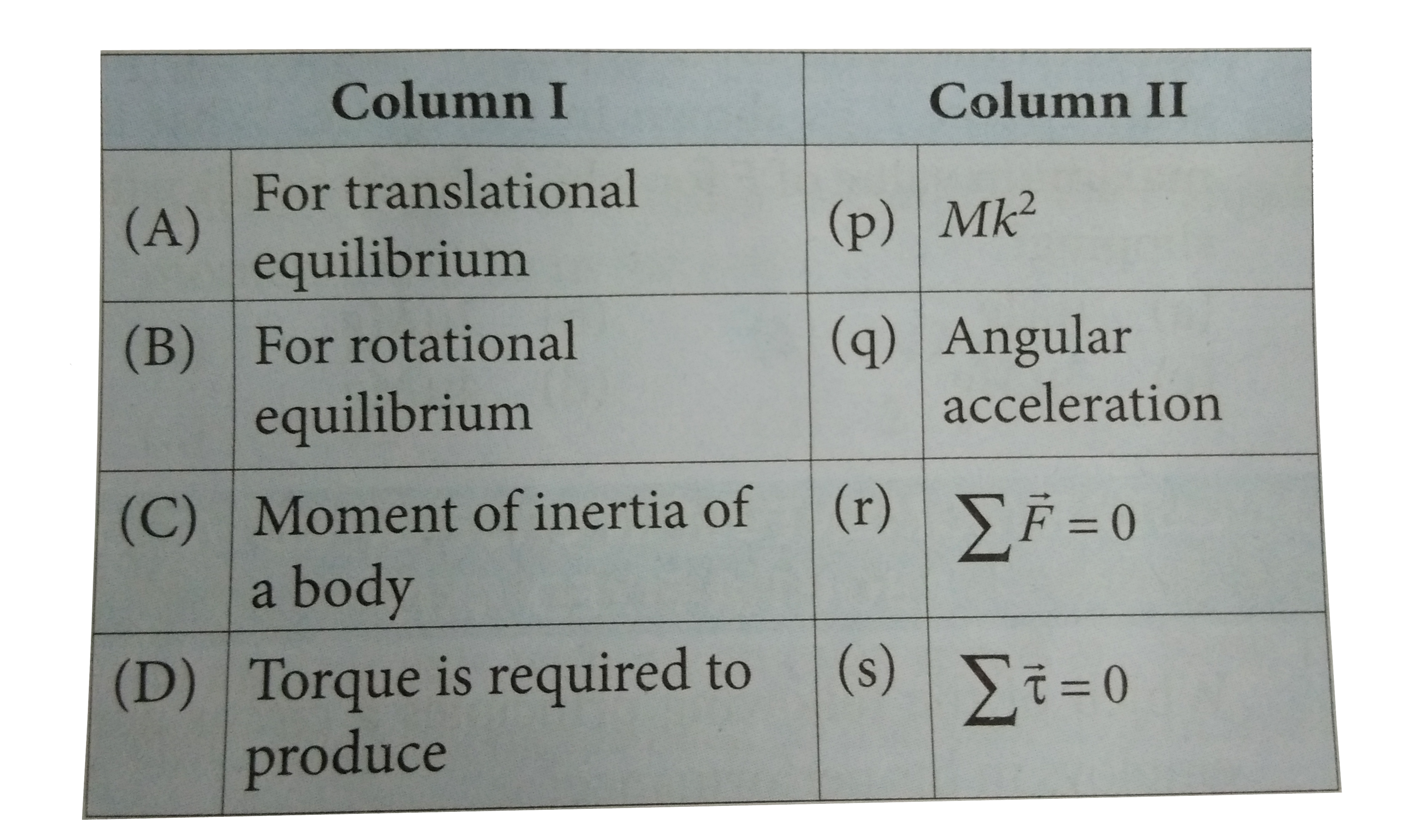 AA-p, B-q, C-r, D-sBA-q, B-r, C-s. D-pCA-r, B-q, C-p, D-pDA-r, B-s, C-p, D-q
AA-p, B-q, C-r, D-sBA-q, B-r, C-s. D-pCA-r, B-q, C-p, D-pDA-r, B-s, C-p, D-qMatch the columns
Column-AColumn-B(a)Ribs(i)26(b)Vertebrae(ii)14(c)Phalanges(iii)1(d)Sternum(iv)14Aiv,I,iii,iiBiv,iii,ii,iCiv,I,ii,iiiDiv,iii,I,iiiMatch the column-I with column-II and select the correct answer.
Column−IColumn−II(A)Pachytene(i)Synizesis(B)Zygotene(ii)Chiasma visible(C)Diplotene(iii)Terminalisation(D)Leptotene(iv)Gene exchange(E)Diakinesis(v)SynapsisA(A)-(i),(B)-(ii),(C )-(iii),(D)-(iv),(E )-(v)B(A)-(iv),(B)-(v),(C )-(ii),(D)-(i),(E )-(iii)C(A)-(iii),(B)-(iv),(C )-(v),(D)-(ii),(E )-(i)D(A)-(ii),(B)-(iii),(C )-(iv),(D)-(i),(E )-(v)
Match the column I, II and III

View SolutionMatch the column I with column II and with column III.
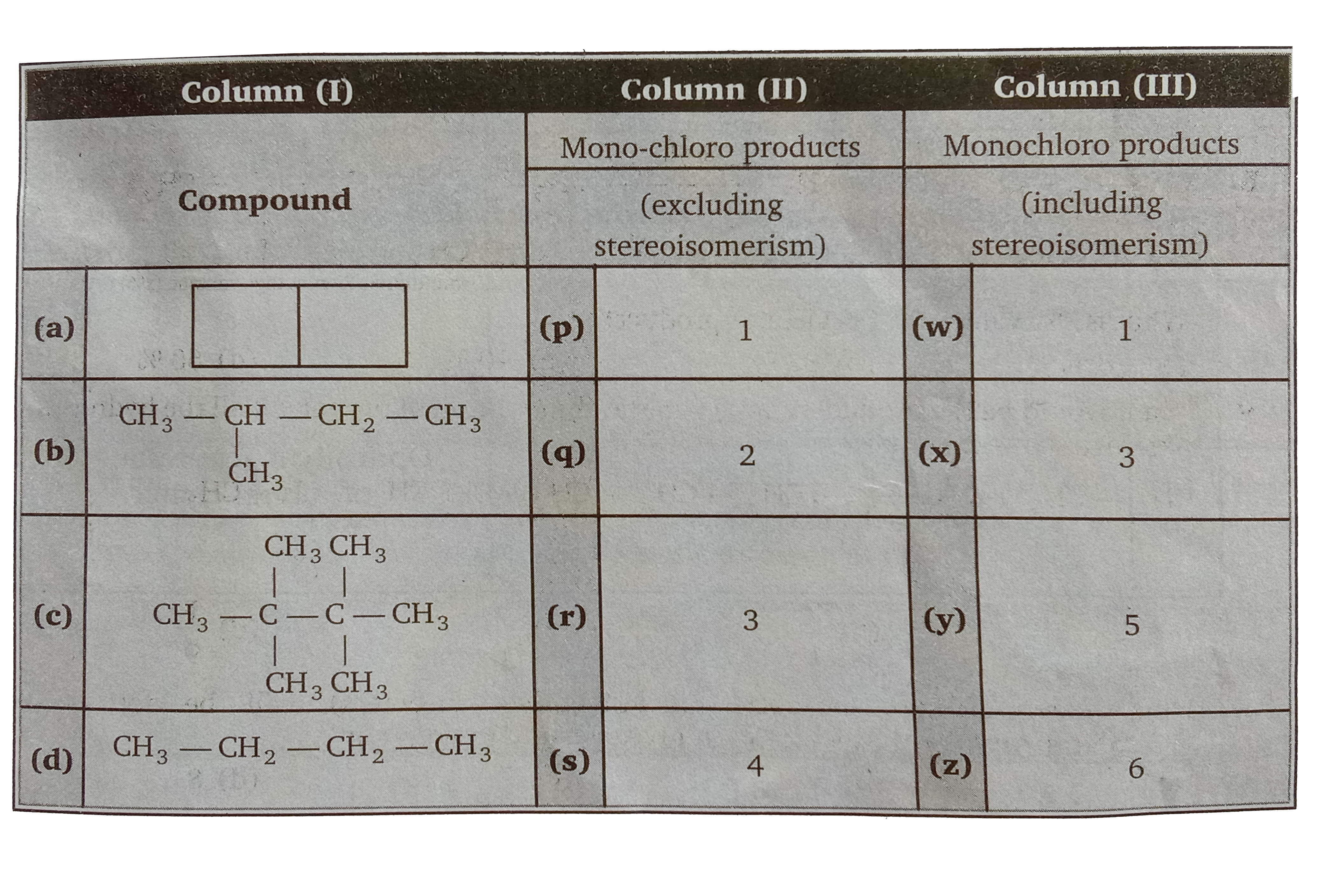
View SolutionMatch the column I with column II and with column III.
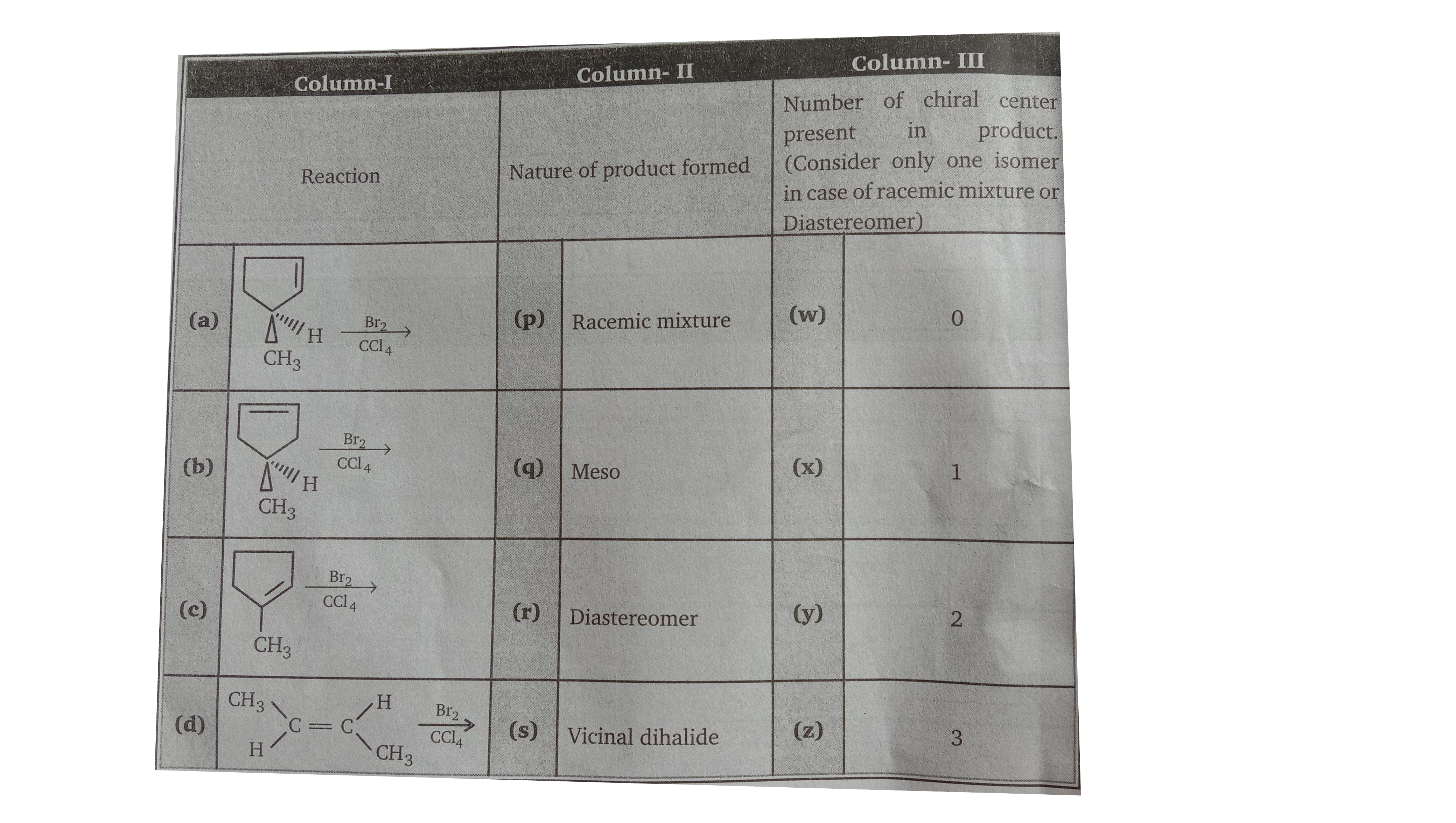
View SolutionMatch the column I with Column II and Column III ltbvrgt
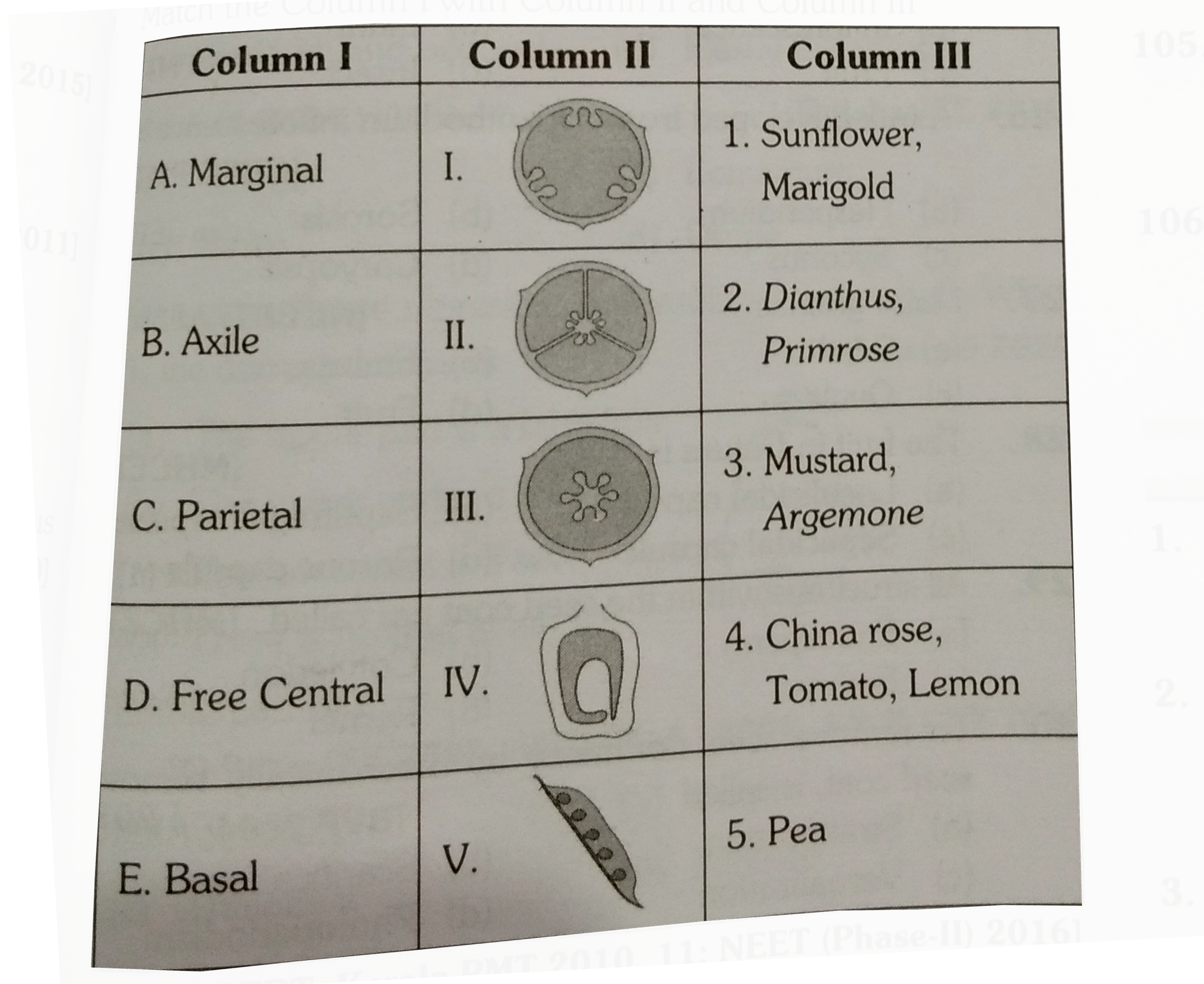
View SolutionMatch the columns-I with column-II and select the correct answer :-
Column-I Column-II(A)Pachytene(i)Bouqute stage(B)Zygotene(ii)Chiasma visible(C) Diplotene(iii)Terminalisation(D)Leptotene(iv) Gene exchange(E)Diakinesis(v) Synapsis
View Solution

